In my low-power application I have a MCU waiting for an interrupt to wake up. (see picture) There are two sensor ICs (IC1, IC2) which consume very little and wake up the MCU via the interrupts. After waking up, power-heavy ICs (two transmitters IC3, IC4 and one ADC IC5) should be switched on. I consider to use three NPN transistors for this.
The system runs autonomously and is supplied most of the time by lithium primary cells. Very rarely the application is connected to the mains. However, the duration is sufficient to charge some Li-Ion batteries. Therefore I consider to use additional Li-Ion batteries (e.g. 18650) in order to use them for a time after disconnecting the application from the power supply and to spare primary cells. As soon as these are drained, the primary cells should continue to supply the application with power. But for this I need a possibility to switch automatically between the energy sources (a kind of Power-MUX).
Is the transistor variant the most optimal (in terms of energy-saving) variant for switching power-greedy ICs?
Is there a kind of "Power-MUX" or comparable ICs to manage different DC input sources?
Thank you
